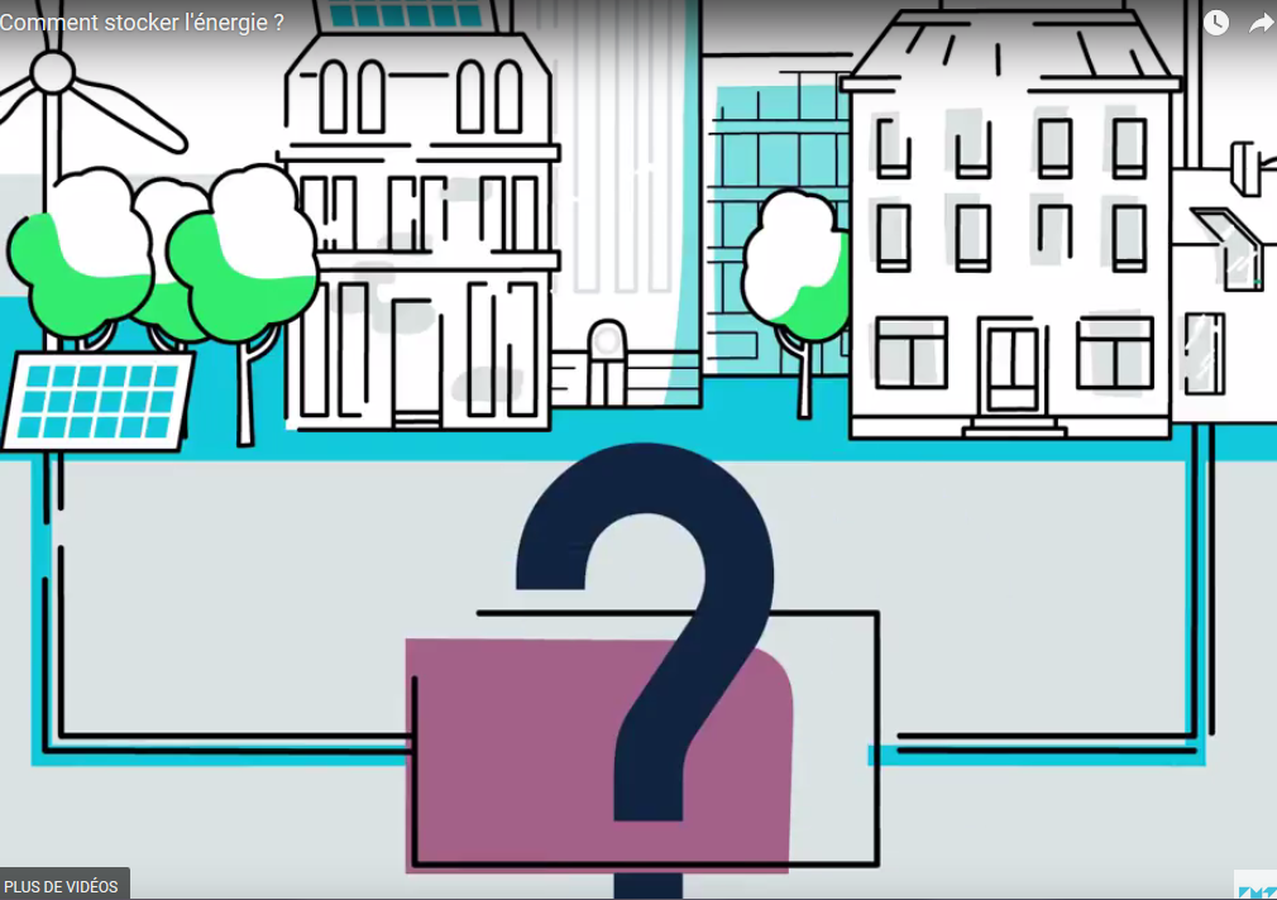What is renewable energy storage?
 The storage of green energy is an issue which concerns many sectors, whether for energy transition or for supplying power to connected objects using batteries. Thierry Djenizian, a researcher at Mines Saint-Étienne, explains the main problems to us, focusing in particular on how electrochemical storage systems work.
The storage of green energy is an issue which concerns many sectors, whether for energy transition or for supplying power to connected objects using batteries. Thierry Djenizian, a researcher at Mines Saint-Étienne, explains the main problems to us, focusing in particular on how electrochemical storage systems work.
Why is the storage of renewable sources of energy (RSE) important today?
Thierry Djenizian: it has become essential to combat the various kinds of pollution created by burning fossil fuels (emission of nanoparticles, greenhouse gases, etc.) and also to face up to the impending shortage over the next decades. Our only alternative is to use other natural, inexhaustible energy sources (i.e. hydraulic, solar, wind, geothermal and biomass). These sources allow us to convert solar, thermal or chemical energy into electrical and mechanical energy.
However, the energy efficiency of RSEs is considerably inferior to that of fossil fuels. Also, in the cases of solar and wind power, the source is “intermittent” and therefore varies over time. Their implementation requires complex and costly installation processes.
How is renewable energy stored?
TD: in a general sense, energy produced by RSE drives the production of electricity which can be stored in systems that are either mechanical (hydraulic dams), electromagnetic (superconducting coils), thermal (latent or sensitive heat) or electrochemical (chemical reactions generating electron exchange).
Electrochemical storage systems are made up of three elements: two electrodes (electronic conductors) separated by an electrolyte (an ion conductive material in the form of a liquid, gel, or ceramic, etc.). Electron transfer occurs on the surface of the electrodes (at the anode in the case of electron loss and at the cathode in the opposite case) and they circulate within the circuit in the opposite direction to that of the ions. There are three main categories of electrochemical storage systems: accumulators or batteries, supercapacitors and fuel cells. For RSEs, the changes produced are ideally stored in accumulators for energy performance and cost reasons.
How do electrochemical storage systems work?
TD: Let’s take the example of accumulators (rechargeable batteries). The size of these varies according to the quantity of energy required by the device in question, ranging from a button battery for a watch, through to a car engine. Dimensions aside, accumulators function by using reversible electrochemical reactions.
Let’s consider the example of a discharged lithium-ion accumulator. One of the two electrodes is made out of lithium. When you charge the battery, it receives negative charge (electrons), or in other words, electricity produced by the RSE, since the provision of electrons triggers a chemical reaction, releasing the lithium from the electrode in the form of ions. The ions then migrate through the electrolyte to insert themselves into the second electrode. When all the sites that can accommodate lithium on the second electrode are occupied, the battery is fully charged.
As the battery is discharged, reverse chemical reactions spontaneously occur, re-releasing the lithium ions which make their way back to the starting point. This allows for a current to be recovered which corresponds to the movement of previously stored charges.
What difficulties are associated with electrochemical storage systems?
TD: Every approach has its own set of advantages and disadvantages. For example, fuel cells present the issue of high costs due to the use of platinum which speeds up the chemical reactions. Additionally, hydrogen (the fuel within the cell) produces many restrictions in terms of production and security. Hydrogen is also hard to obtain in large quantities through a source other than hydrocarbon compounds (fossils) and is also an explosive, meaning there are restrictions in terms of storage.
Supercapacitors are the preferred system for devices requiring a strong power supply over a short period of time. In basic terms, they allow a small amount of charge to be stored but can redistribute this very quickly. They can be found in the systems that power the opening of airplane doors for example, as these need a powerful energy supply for a short period of time. They are also used in hybrid car engines.
Conversely, the accumulators we talked about before allow a large number of charges to be stored but their release is slow. They are very energy efficient but not very powerful. In some ways, the two options are complementary.
Let’s compare these measures to another system in which electrons are represented as a liquid. Supercapacitors are like a glass of water. Accumulators would then be comparable to a jug, in that they offer a much larger water (or charges) storage capacity than the glass. However, the jug has a narrow neck, preventing liquid from being poured quickly. The ideal would be to have a jug which could release its contents and then be refilled easily like the glass of water. This is precisely the subject of current research which is based on finding systems able to obtain large densities of energy and power.
Which systems are best suited for the use of renewable energy as a power source?
TD: The field of potential applications is extremely vast as it encompasses all the growing energy needs that we need to satisfy. It includes everything from large installations (smart grid) to providing power for portable microelectronic devices (connected objects), and even transport (electric vehicles). In the latter, the battery directly influences the performance of the environmentally-friendly automobiles.
Today, lithium-ion batteries can considerably improve the technical characteristics of electric vehicles, making their usage possible. However, the energy efficiency of these accumulators is still 50 times lower than that of hydrocarbons. In order to produce batteries that are able to offer a credible electric car to the market, the main thing that needs to be done is to increase the energy storage capacity in the batteries. Indeed, getting the maximum amount of energy possible from the smallest possible volume is the challenge faced by all transport. The electric car is no exception.
Also read on I’MTech :





Leave a Reply
Want to join the discussion?Feel free to contribute!